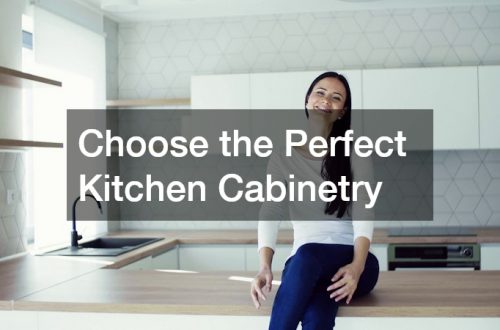Installing kitchen cabinets is a significant home improvement project that can dramatically enhance the functionality and aesthetics of your kitchen space. Understanding the process and considerations involved ensures that you make informed decisions that align with your needs and budget. This article provides a detailed exploration of the various aspects you should consider before undertaking a kitchen cabinet installation.
How Much Does It Cost to Install Kitchen Cabinets?
Factors Influencing the Cost
The cost of installing kitchen cabinets is influenced by several factors, including the choice of materials, which significantly impacts the project’s overall price. Labor costs are another significant factor, varying based on the complexity of the installation and local rates. Additionally, potential additional expenses, such as hardware, custom modifications, and removal of old cabinets, can affect the overall budget.
Material selection is crucial, with options like solid wood, plywood, and MDF each offering different price points and durability levels. Labor costs can vary greatly, with custom cabinet installations generally requiring highly skilled carpenters, thus increasing expenses. Unforeseen challenges during installation, such as uneven walls or plumbing issues, can also lead to higher costs.
It’s essential to get a detailed estimate from contractors to understand all potential costs associated with the project. Homeowners can opt for semi-custom cabinets to manage costs while still achieving a personalized look. Additionally, considering the resale value and longevity of the materials can help make a more cost-effective investment.
What Types of Materials are Best for Kitchen Cabinets?
Comparing Popular Cabinet Materials
When choosing materials for kitchen cabinets, it’s important to consider both aesthetics and functional requirements. Wood is a popular choice due to its timeless appeal and versatility, but it requires regular maintenance to prevent warping. Alternatively, laminate offers an affordable option with a wide range of colors and designs, though it might lack the premium feel of wood.
Metal cabinets provide a sleek, modern look and are extremely durable, but they can be prone to dents and scratches if not properly maintained. On the other hand, Thermofoil is a budget-friendly option that mimics the appearance of wood, though it may not be as durable when exposed to high heat and moisture. Solid wood cabinets add natural warmth to the kitchen but require investment in quality finishes to enhance durability.
Evaluating the durability, style, and cost of each material can help homeowners make the best choice for their kitchen. While solid wood is often considered the gold standard for its aesthetic and durability, the choice ultimately depends on individual preferences and lifestyle needs. It’s important to balance immediate material costs with long-term maintenance and repair considerations.
How Long Does the Installation Process Take?
Timeframe for Different Kitchen Layouts
The duration of cabinet installation varies depending on kitchen layouts, the complexity of the design, and the level of customization involved. For a straightforward, standard kitchen layout, the installation process may take anywhere from three to five days. However, for larger kitchens with intricate designs, customization, and additional refinements, the installation period may extend to several weeks.
The timeline also factors in pre-installation preparations such as working around plumbing and electrical setups, removal of old cabinets, and wall adjustments. Custom cabinets, which require precise measurements and potentially bespoke crafting, often have longer lead times, adding to the overall project duration.
Planning ahead and scheduling with professional installers can help homeowners better manage timelines and minimize disruptions. It’s essential to allow for some flexibility, as unforeseen issues or delays are common in home improvement projects. Effective planning ensures that the project adheres to the desired timeline while maintaining quality and precision in the installation.
Can I Install Kitchen Cabinets Myself?
DIY vs. Professional Installation
DIY kitchen cabinet installation can be an appealing option for homeowners looking to save on labor costs, but it requires thorough preparation and a certain skill level. Installing cabinets yourself necessitates a precise understanding of layout, measurements, and alignment to ensure a successful outcome. Additionally, having the right tools and equipment is critical to address challenges such as leveling and securely anchoring cabinets to walls.
Conversely, professional installation offers the advantage of experienced hands and potential time savings, as trained installers can efficiently handle complications. Although hiring professionals involves higher upfront costs, it can also prevent errors that might lead to future expenses for corrections or repairs. Homeowners weighing the option of DIY should assess their confidence in handling cabinetry tools and their comfort with detailed planning.
The choice between DIY and professional installation ultimately depends on personal skills, budget, and the complexity of the project. While confident DIY enthusiasts can manage standard installations, those uncertain about their capabilities may prefer to employ professional services, ensuring peace of mind and a quality finish. Careful consideration of these factors helps in making a sound decision that aligns with personal preferences and project goals.
In conclusion, installing kitchen cabinets is a multifaceted project that requires careful planning and consideration of various factors. Understanding the cost implications, selecting appropriate materials, and assessing the installation timeline are crucial steps in ensuring a successful project. Whether opting for DIY or professional installation, considering these elements can lead to a more efficient and satisfying kitchen cabinet installation experience.






